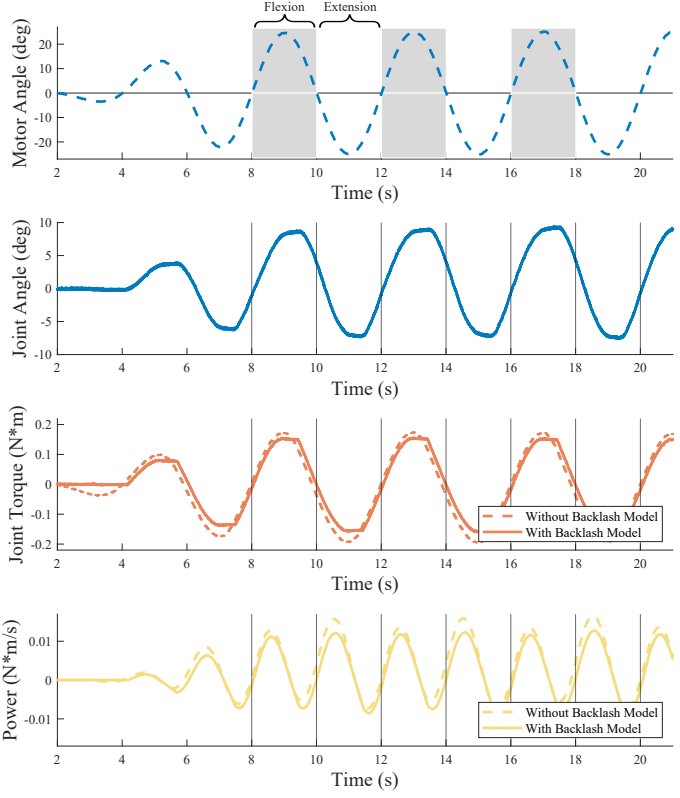Estimation of Interface Power During Physical Human-Robot Interaction
I present a novel method to estimate interface power at physical attachment interfaces using experimental data. The estimation method is demonstrated with the Maestro hand exoskeleton, and a case study is performed to understand the effects of interface padding.
Even the best wearable robots face challenges with power losses in the system, especially at the physical attachment interface. While some sources for power loss are inherent to the system, such as human soft tissue or musculoskeletal joint damping, other sources such as soft padding materials and bias forces from strap tensioning can be modulated to optimize interface power transmission. No method currently exists for estimating power losses at physical interfaces, especially for upper-body exoskeletons. This project presents a novel method to estimate interface power from experimental data in a wearable hand device. The method is implemented with the Maestro hand exoskeleton, and the repeatability of the interface power estimation is confirmed with human testing. A case study is also conducted to investigate how interface foam padding affects energy loss, thus highlighting a use of interface power estimation. The presented method for measurement of interface power can be applied to the study of other wearable devices for evaluating the effectiveness of physical human-robot interaction, thus enabling improvements in the design and control of robots for seamless integration with the human body.
Collaborators: Gaurav Mukherjee, Raymond King, Ashish D. Deshpande
Related Publications:
Estimation of Interface Power During Physical Human-Robot Interaction in Hand Exoskeletons (In Progress)







